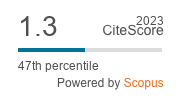Comparative Analysis Of Balances Of Payments Of Ukraine And Poland In The Post-crisis Economic Environment
DOI:
https://doi.org/10.2478/cer-2013-0032Keywords:
balance of payments, current account, capital account, small open economy, adjustment of balance of paymentsAbstract
The condition of a country’s balance of payments is a crucial factor for effective development in small open economies, such as Poland and Ukraine. Because of their dependence on the climate in international markets, Poland and Ukraine are especially vulnerable to fluctuations in the global situation. Thus it is essential for both national economies to develop effective instruments for adjusting their balance of payments accounts. This necessity in turn requires research into the main mechanisms used for making balance of payments adjustments for developing countries, since not all aspects have been yet explored. A comparative analysis of the balance of payments situations in these countries is conducted in this article, which aims to prove external similarities between both countries and explain why Poland has attained greater success in the process of overcoming the consequences of the global financial crisis. Such conclusions can be used as a roadmap for Ukraine on its way to adjustment of its balance of payments account. The main reason for such exploration is that Ukraine’s balance of payments is still operating in deficit conditions, which negatively affects the overall state of the national economy of the country.
Downloads
References
Atish R., Ostry J. D. (1995). The Current Account in Developing Countries: A Perspective from the Consumption-Smoothing Approach., ʻWorld Bank Economic Reviewʼ 9(2), pp. 305-333
Google Scholar
Bird G. (1997) External Financing and Balance of Payments Adjustment in Developing Countries: Getting a Better Policy Mix, World Development, Vol. 25, Issue 9, pp. 1409–1420
Google Scholar
Central Statistical Office. Yearbook of foreign trade statistics of Poland. Available at http://www.stat.gov.pl/gus/5840_3543_ENG_HTML.htm accessed August 25, 2013
Google Scholar
Chinn M. D., Prasad E. S. (2003). Medium-Term Determinants of Current Accounts in Industrial and Developing Countries: an Empirical Exploration, ʻJournal of International Economicsʼ 59, pp. 47–76
Google Scholar
European Union Law. (2011). Commission Regulation (EU) No1006/2011 of 27 September 2011, Official Journal of the European Union, Vol. 54. Available at http://eur- lex.europa.eu/LexUriServ/LexUriServ.do?uri=OJ:L:2011:282:FULL:EN:PDF accessed August 25, 2013
Google Scholar
Holland M., Vieira F., Canuto O. (2004) Economic Growth and the Balance-of-Payments Constraint in Latin America, Investigacion Economica, Vol. LXIII, 247, pp. 45-74
Google Scholar
International Monetary Fund. “Balance of payments manual”. Available at http://www.imf.org/external/np/sta/bop/bopman.pdf accessed August 25, 2013
Google Scholar
Irish Tax and Customs. “Classification of Goods”. Available at: http://www.revenue.ie/en/customs/businesses/importing/classification-of-goods.html accessed August 25, 2013
Google Scholar
Lopez J. G., Cruz A. B. (2000), Thirlwall’s Law” and Beyond: the Latin American Experience,
Google Scholar
ʻJournal of Post Keynesian Economicsʼ, Vol. 22, No. 3, pp. 477-495
Google Scholar
Ukrexport. “Socio-Economic Conditions in Republic of Poland in the Context of Financial Crisis (as for January-August 2009)”. Available at: http://www.ukrexport.gov.ua/ukr/oglad_economiki/ukr/2551.html accessed August 25, 2013
Google Scholar
Vavryshchuk V. V. (2005), Concentration of Export and Intra-Industry Trade of Ukraine: Quantitative Evaluations, Scientific Notes, Vol. 44, pp. 42-46
Google Scholar
Downloads
Published
How to Cite
Issue
Section
License

This work is licensed under a Creative Commons Attribution-NonCommercial-NoDerivatives 4.0 International License.










